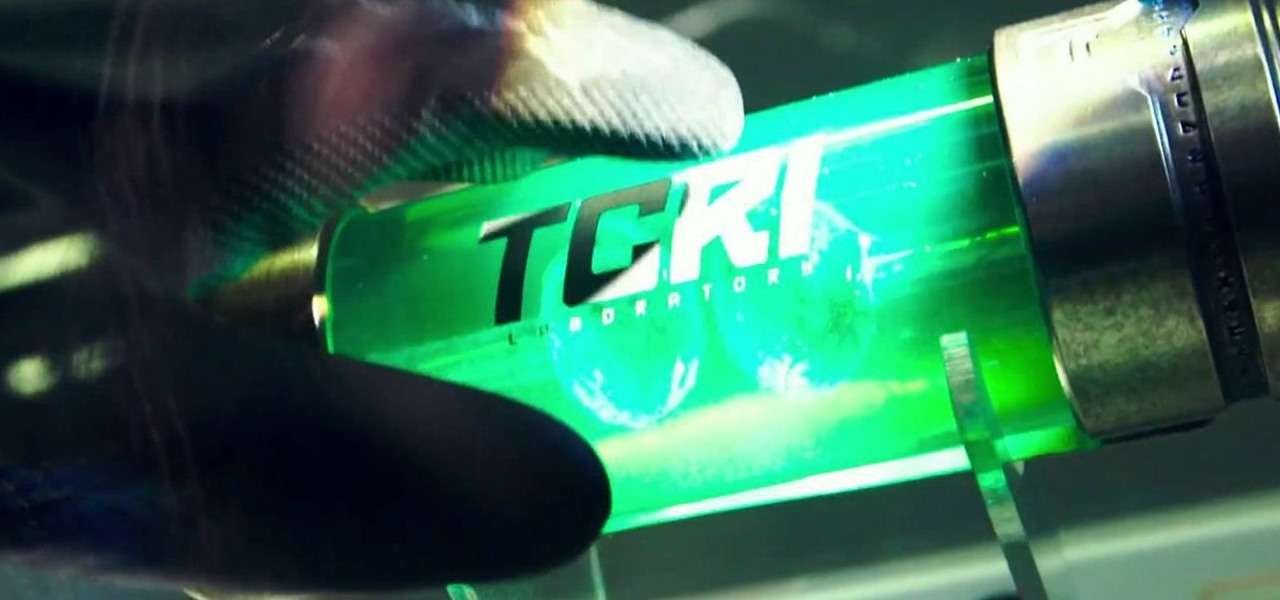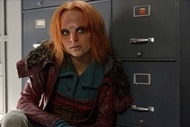Create a free profile to get unlimited access to exclusive videos, sweepstakes, and more!
Could mutagenic ooze give you 'Turtle Power'?: The science behind Teenage Mutant Ninja Turtles

Listen, we talk about a lot of fringe science in this column. Sometimes we get into the weeds a little, speculating on what could be 10 or even 100 years from now. But this week, we're wading into truly controversial waters: 2016's Teenage Mutant Ninja Turtles: Out of the Shadows, which was released five years ago.
Out of the Shadows was the second in what was supposed to be a live-action trilogy. Despite garnering relatively positive reviews, especially when compared against its predecessor, the movie underperformed at the box office and a third flick was canceled.
While Out of the Shadows effectively killed that iteration, Teenage Mutant Ninja Turtles is a resilient franchise. Since the film's release, we've seen the completion of one animated series and the launch of another, as well as continuing comics and a parade of merchandise. Earlier this week, an animated film reboot from Seth Rogen and Evan Goldberg's Point Grey Pictures was confirmed.
Like its central characters, TMNT continues to change shape and appearance to fit the demands of new audiences, but could these heroic turtles actually exist?
OOZE
The origin of the ooze that put the "mutant" in Teenage Mutant Ninja Turtles is a matter of some discourse. Depending on which version of Turtles you're referencing, it came either from the Techno Cosmic Research Institute or the Techno Global Research Institute (TCRI and TGRI, respectively), but its effects are the same, more or less.
Contact with the ooze, also called the "mutagen," results in macro-level changes to an individual's genetic structure. Humans who come into contact with the ooze tend to mutate into anthropomorphized animals. The method through which this is accomplished varies. Either an individual melds with the last animal or object with which it came into contact, or they revert to something resembling an animal from which they descended.
There are, of course, some issues with this sort of mutation. Firstly, and this probably doesn't need to be stated, inanimate objects have no DNA to share, save for the bacteria on their surfaces. If something like the ooze existed, and if it operates purely via genetic manipulation, we shouldn't see the sorts of mutations that end in ice cream kitties. Alas…
Second, if the mutagen operates — as is seemingly the case with Bebop and Rocksteady — by reverting humans to an earlier genetic state, we wouldn't see that sort of differentiation. There's no reason the two should have settled on different animals, as if they individually descended from different species. That's not how evolution works.
It's true that humans share common ancestors with other animals, in fact every living thing on Earth shares common descent with all other life on Earth. But we did not evolve from hogs or rhinoceroses, in much the same way we didn't evolve from modern chimpanzees or monkeys, though we do share a common ancestor with them. If anything, Bebop and Rocksteady should have become a facsimile of a small, tree-climbing rodent-esque thing, the forebear of all placental mammals.
But that doesn't make for good martial arts battles. What are you gonna do?
Outside of the fictional context, mutagens do exist in the form of any chemical or physical phenomena capable of altering a cell's genetic makeup. Commonly, our DNA is under constant attack from sunlight, chemical exposure, bacteria, and viruses. In fact, about 8 percent of our genome comes from changes enacted by viruses, including mutations that resulted in our ancestors developing placenta. If not for mutagens, we wouldn't be who we are.
In a way, mutagens are responsible, at least in part, for anthropomorphic evolution. It's just that it takes a really long time, and any positive results occur only after generations of collective change.
The sorts of directed genetic mutation seen in TMNT don't occur as a result of mutagens. In nature, mutagens result in random mutation that may or may not, over generations, have positive results. They have no agenda.
GENETIC DIRECTION
We've discussed what happens to humans when they come into contact with the ooze, but Ninja Turtles stories center more closely on what happens when the ooze impacts animals.
The story opens with four turtles and a rat. After encountering the mutagen, they mutate into something resembling humans with animal features. They stand on two legs and develop spoken language, as well as an affinity for pizza. These characteristics certainly don't describe all humans, but it's a pretty good starting definition.
The fatal flaw, though, in the TMNT mythos is in the assumption that evolution must occur in one direction. As is the case with the titular turtles and their sensei Splinter, animal contact with the ooze results in evolution toward humanity.
They look like turtles or a rodent, sort of, but they really look like people with some variable external features. This is true also of Tokka and Rahzar, Leatherhead, Tiger Claw, Alopex, Old Hob, Bludgeon, and... well, the list goes on.
In each case, these characters began as animals and, upon contact with the ooze, became something resembling a human. This seems to stem from the idea that humans are the pinnacle of contemporary evolution, and that evolution moves along a trajectory from non-humanoid to humanoid.
At face value, it's a reasonable assumption. We, being human, see the world through our own eyes. We know our own trajectory and envision all other animals as traveling the same path, but it just isn't so.
Evolution cares not at all about change in any given direction. External pressures guide genomes toward those adaptations that are beneficial for survival, and there is absolutely no rule indicating that must end at sapience, bipedalism, or any other feature we associate with humanity. Evolution cares only about what's good enough, if you want a body that's perfect, you're going to need some changes. What those changes are is a matter of debate. Here's one idea...
In fact, there are countless species that remain largely unchanged over millions of years. They're doing just fine exactly as they are. Other species, like cetaceans, left the oceans and evolved legs, only to return to something more closely resembling a previous state. At least externally.
Natural selection cares nothing for our biases. The evolutionary trajectory we imagine is a projection of our own path onto the rest of the natural world. Unless a mutagen were designed specifically to drive mutation along a particular path, and with the ability to enact macro-scale changes in individuals, those animals who encounter it would be just as likely to revert to a previous state, become something entirely new and heretofore unseen, or break out in a terminal case of fatal mutation.
Although, the Teenage Mutant Ninja Turtles were never intended to be taken all that seriously. They are precisely what they were meant to be: enduringly ridiculous fun.


























